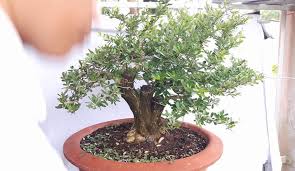The Art of Lacquer in Royal Courts: A Timeless Tradition of Elegance and Craftsmanship
Lacquer art has long been an integral part of royal courts, symbolizing both power and sophistication. From ancient times, the royal families across Asia, particularly in Vietnam, China, Japan, and Korea, commissioned exquisite lacquer works to decorate palaces, temples, and personal belongings. Lacquer art is not only about aesthetic beauty; it represents cultural heritage, craftsmanship, and status. Its deep historical roots and multifaceted techniques reflect the evolution of art and material culture, making it a unique expression of royalty. In this article, we will explore the significance of lacquer art in royal courts, its historical context, the techniques used in its creation, and how it continues to influence art and design today.
1. The Historical Significance of Lacquer Art in Royal Courts
Lacquer art has a long and illustrious history, particularly in East and Southeast Asia. The origins of lacquer art can be traced back to ancient China, where it was first used in the Zhou Dynasty (1046–256 BCE) for decorating wooden surfaces and objects. The craft spread to other regions, including Japan, Korea, and Vietnam, where it flourished under royal patronage.
- China: In ancient China, lacquerware was often associated with the elite and imperial families. The Chinese court valued lacquer as a material that conveyed both luxury and prestige. The royal family commissioned lacquer objects such as trays, boxes, furniture, and decorative screens. The intricate designs on lacquer items often reflected the emperor’s divine right to rule, with motifs of dragons, phoenixes, and other symbols of power.
- Japan: In Japan, lacquer art reached its peak during the Edo period (1603–1868). The shoguns and aristocracy of the time were great patrons of lacquer art, commissioning items ranging from simple household objects to elaborate furniture and ceremonial pieces. Japanese lacquerware often featured intricate inlays of mother-of-pearl, gold, and silver, creating masterpieces that were not only functional but also works of art.
- Vietnam: Lacquer art in Vietnam has a rich tradition, with a distinctive style that developed during the Ly and Tran dynasties (11th–14th centuries). The Vietnamese royal courts used lacquer art to decorate their palaces and temples, often employing intricate techniques such as gold leaf inlays and the use of vibrant colors to create elaborate scenes from mythology, nature, and daily life.
- Korea: Lacquer art in Korea has been highly regarded for centuries. The royal court used lacquer to create elegant furniture, household items, and even religious artifacts. Korean lacquerware is known for its delicate and refined quality, often incorporating mother-of-pearl inlays and intricate designs that represent the ideals of Confucianism and Korean aesthetics.
2. Techniques and Materials Used in Royal Lacquer Art
The creation of lacquer art is a complex and labor-intensive process that requires skill, patience, and the mastery of various techniques. The materials used in lacquer art are primarily derived from the sap of lacquer trees (Rhus verniciflua), which is processed to create a smooth, glossy finish. The lacquer is then applied to wooden or metal surfaces, often in multiple layers, to achieve the desired texture and effect.
- Layering and Drying: The traditional technique of lacquer application involves layering the lacquer over a surface, allowing each layer to dry before the next is applied. This process can take weeks or even months, depending on the number of layers needed. The lacquer hardens over time, creating a durable and lustrous finish that is resistant to moisture, heat, and decay.
- Inlaying: One of the hallmark techniques of royal lacquer art is inlaying. Various materials such as gold, silver, mother-of-pearl, ivory, and even precious stones were inlaid into the lacquer surface to create intricate designs. This technique was particularly popular in Japan and Vietnam, where it was used to depict scenes of nature, mythology, and historical events.
- Carving and Relief Work: In addition to inlaying, many royal lacquer pieces featured carving or relief work. Skilled artisans would carve intricate patterns or images into the lacquer surface, adding depth and texture to the design. This technique was particularly popular in China, where carved lacquer pieces often depicted dragons, phoenixes, and other symbols of imperial power.
- Burnishing and Polishing: Once the lacquer has dried and the design is complete, the piece is carefully burnished and polished to create a high gloss. This polishing process, known as “buffing,” gives the lacquer its characteristic sheen and enhances the beauty of the inlays and carvings.
- Gold and Silver Leaf: Gold and silver leaf were often used in royal lacquer art to highlight certain areas of a design. The use of gold leaf, in particular, was a symbol of wealth and prestige in royal courts. The gilding process required the application of thin sheets of gold over the lacquer surface, which were then polished to a brilliant shine.
3. Symbolism and Themes in Royal Lacquer Art
Lacquer art in royal courts often carried deep symbolic meanings, reflecting the values, beliefs, and aspirations of the time. The themes depicted in these artworks were carefully chosen to convey messages of power, prosperity, and cultural identity.
- Divine and Mythological Imagery: In many royal lacquer pieces, the emperor or king was depicted as a divine figure. In China, for example, dragons were often used to symbolize the emperor’s divine right to rule. Similarly, in Japan and Vietnam, lacquer art depicted mythological creatures such as phoenixes, qilins, and tigers, which represented strength, wisdom, and harmony.
- Nature and the Seasons: Nature has always been a prominent theme in lacquer art. In Japan, nature motifs such as chrysanthemums, cherry blossoms, and cranes were often depicted to symbolize beauty, longevity, and prosperity. In Vietnam, lacquer artists often depicted scenes of rural life, with landscapes filled with mountains, rivers, and fields, reflecting the harmony between nature and the human spirit.
- Imperial and Royal Symbols: Many royal lacquer items were commissioned to celebrate the achievements of the monarchy. In China, lacquerware decorated with scenes of imperial life, including processions, court gatherings, and ceremonial events, was common. In Korea, lacquerware often featured motifs of longevity, virtue, and Confucian ideals, reflecting the emperor’s role as the moral and spiritual leader of the country.
- Ceremonial and Religious Themes: Lacquer art was also used to create objects for ceremonial and religious purposes. In Vietnam, lacquer altarpieces were crafted to honor ancestors and deities, often depicting intricate scenes of religious ceremonies. In Japan, lacquered Buddhist altars and offerings were created to honor the gods and ensure the well-being of the royal family.
4. Lacquer Art in Royal Court Architecture and Interiors
Lacquer art was not only used to decorate personal objects but also played a vital role in the interior design of royal palaces and courtrooms. Large lacquer screens, furniture, and decorative panels were commonly used to embellish the interiors of royal residences. These pieces were often displayed in grand halls, reception rooms, and temples, where they served both practical and decorative purposes.
- Lacquer Screens: In many Asian courts, large lacquer screens were used to divide spaces, create visual interest, and add elegance to rooms. These screens were often painted with elaborate scenes from nature, mythology, or court life, creating an atmosphere of refinement and grandeur.
- Furniture and Decorative Objects: Royal lacquer art also extended to furniture pieces such as chairs, tables, and cabinets. These items were often elaborately decorated with inlays, carvings, and gilding, transforming ordinary furniture into works of art. Lacquered furniture was a symbol of status, and its intricate designs often conveyed the royal family’s wealth and cultural sophistication.
- Wall Panels and Architectural Details: In some royal courts, lacquer was used to decorate entire walls, ceilings, and architectural details. Lacquer panels adorned the walls of Chinese palaces, Korean temples, and Vietnamese royal homes, creating a sense of continuity between the artwork and the architecture.
5. The Enduring Legacy of Lacquer Art in Modern Design
While lacquer art may have originated in royal courts, its influence can still be seen in modern art, design, and interior decoration. The techniques developed in the royal courts have been passed down through generations of artisans and are still used today to create lacquer furniture, decorative items, and fine art.
- Modern Interior Design: Lacquered furniture and decorative pieces are still highly prized in modern interior design. Many luxury brands and designers incorporate lacquer elements into their collections, taking inspiration from the rich history of royal lacquer art. Contemporary lacquer pieces are often characterized by sleek, minimalist designs combined with traditional techniques, resulting in a fusion of old and new.
- Revival of Traditional Techniques: In recent years, there has been a renewed interest in traditional lacquer art techniques. Many artists and craftsmen are working to preserve the methods and styles developed in royal courts, creating new pieces that honor the legacy of lacquer art while pushing the boundaries of contemporary design.
Conclusion
The art of lacquer in royal courts represents a rich tradition of craftsmanship, symbolism, and cultural heritage. From the intricate designs of Chinese lacquerware to the elegant screens of Japanese palaces, lacquer art has played an essential role in royal life, decorating not only objects and furniture but also entire palaces and temples. Today, the legacy of lacquer art continues to influence modern design, serving as a bridge between past and present. The enduring beauty and significance of lacquer art remind us of the power of craftsmanship to transcend time and culture, leaving a lasting mark on the world of art and design.


